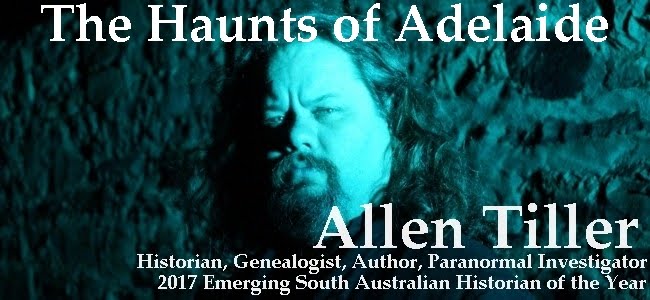The Ghosts of Gawler Part 6
Para-Para
Para-Para Mansion, an icon of Gawler, situated in what is now Gawler West.
Having grown up very nearby, it wasn't unusual for myself and my friends to wander onto the Para-Para estate as boys, walking along the river, we would find ourselves in the backyard of the mansion's property on occasion and marvel at all the farm equipment strewn about the place.
Having grown up very nearby, it wasn't unusual for myself and my friends to wander onto the Para-Para estate as boys, walking along the river, we would find ourselves in the backyard of the mansion's property on occasion and marvel at all the farm equipment strewn about the place.
Of course, having grown up in Gawler, and going to school nearby, I inevitably heard the rumours of the Mansion being haunted.
There were a great many stories to tell, most coming from when the building was unoccupied for many, many years, my favourite one isn't so much a ghost story but a practical joke of sorts, that could well have been an urban legend, it went something like this.
There were a great many stories to tell, most coming from when the building was unoccupied for many, many years, my favourite one isn't so much a ghost story but a practical joke of sorts, that could well have been an urban legend, it went something like this.
A group of older school boys led some younger schoolboys to the mansion to tell them some ghost stories, and generally spook the younger lads. They peeked through windows at the somewhat derelict insides, room by room, telling the boys stories of murders and suicides, when they got to the last room, the younger boys would freak out and run away...of course the older boys would fall on the ground in hysterics, because much earlier they had broken in and nailed all the furniture to the roof, making it seem, in the gloom of the evening, as though the furniture was floating up there!
Two other ghost stories I can remember, one involves a young lady committing suicide. She had fallen for a young man but had found him sleeping with the Mansions maid, she flung herself down the staircase and broke her neck. It was always rumoured that if you peeked through the glass of the door you would see her white face peek back.
The other notable story from my childhood involved a man of the house, who was someone of importance, being found by his wife having sex with the housekeeper in front of an open fireplace on the bottom floor.
In her shock she grabbed a fire poker and stabbed him through the back with it, killing him, she then hit the maid over the head with a wooden rolling pin, killing her, then pushed them both into the fire...she then threw herself down the stairs and broke her neck landing on the floor...
In her shock she grabbed a fire poker and stabbed him through the back with it, killing him, she then hit the maid over the head with a wooden rolling pin, killing her, then pushed them both into the fire...she then threw herself down the stairs and broke her neck landing on the floor...
So were any of these stories true?
Most likely not, the only death recorded in the house in local newspapers was that of the original builder and owner Mr Walter Duffield, who died on November 5th 1882. It is most likely that the stories sprung from periods when the house was empty and local kids would find their way in, however, saying that, in 1939, The Bunyip, Gawler's local newspaper ran an article that mentions the rumour of a ghost "floating up and down the staircase”.
Another article, an extract of which is published here also mentions a lady on the staircase.
 |
| Para Para in 2012 - photo by K. Tiller |
Other than it's infamous ghost stories and urban legends, Para Para also has a royal connection, with His Royal Highness, Prince Alfred, Duke of Edinburgh, staying at Para Para in 1867.
http://www.hosking.wattle.id.au/~laurel/parahtml/parahistory.html
Para Para is now a private residence and should be treated as such. The legends of it being haunted, are just that, legends which seem to be attached to any old large house anywhere in the world.
If you wish to view Para Para, please do so from the road and DO NOT trespass as it is private property.
© 2013 Allen Tiller

















